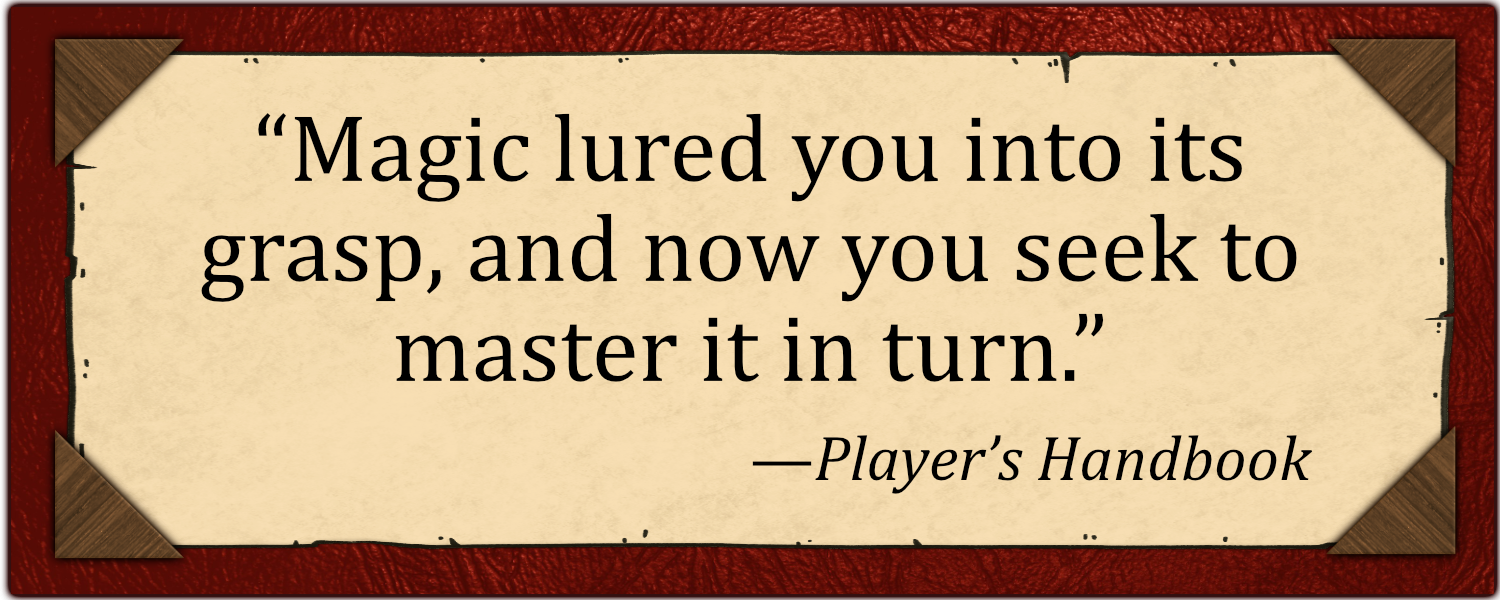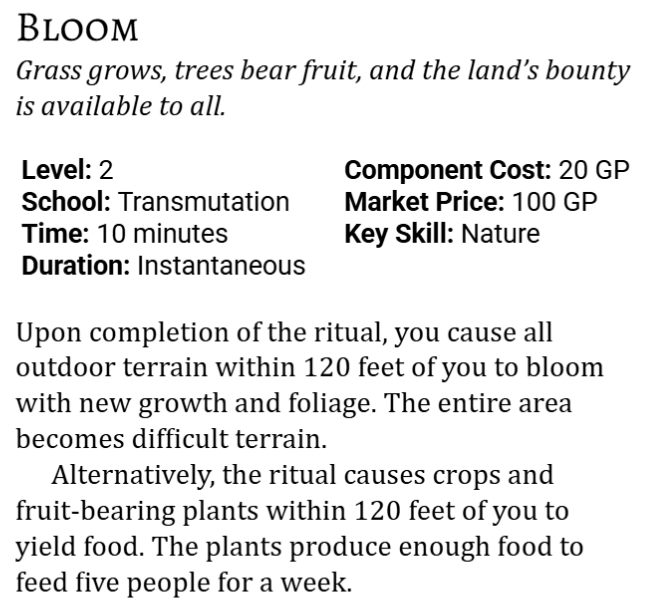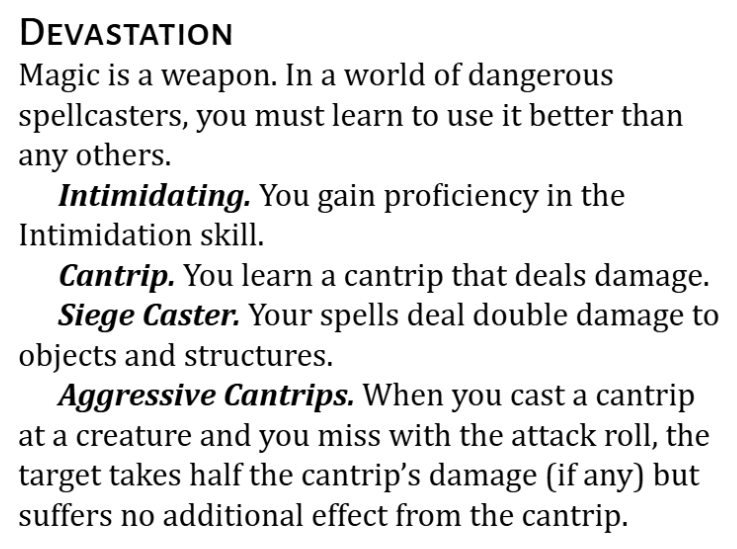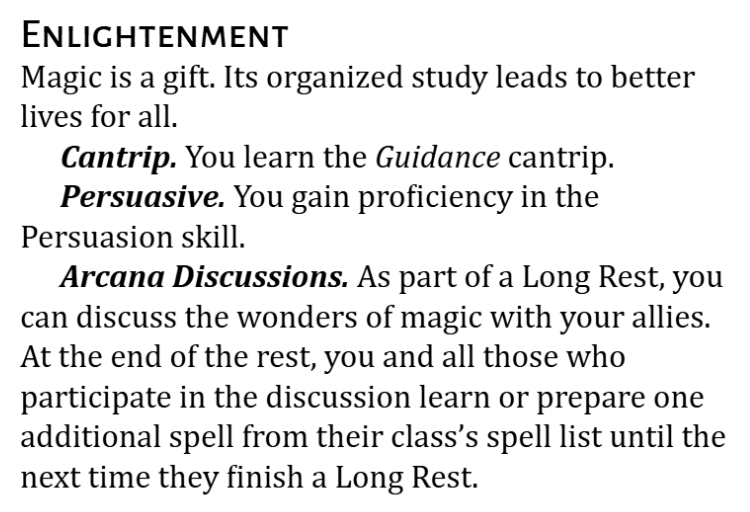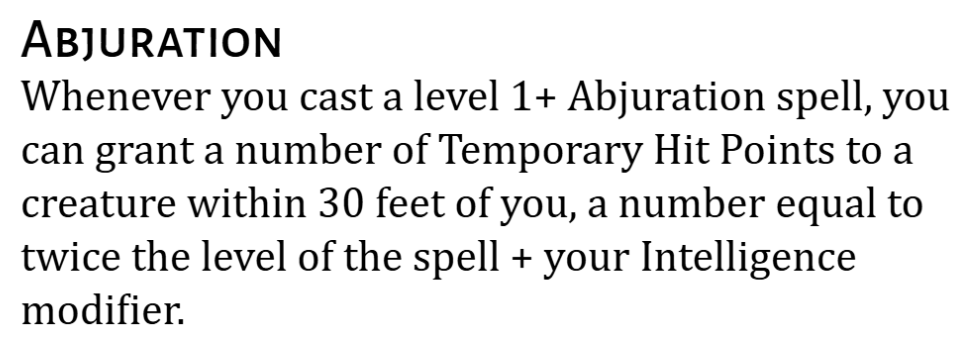Designing 4ever: Stealing From the 4e Wizard
Estimated read time: about 18 minutes
We’re reaching the end of our first foray into the class design of the initial core four of Project 4ever. Pulling from Dungeons & Dragons 4th Edition, we’ve dug deep into the Fighter, Rogue, and Cleric and pulled out the parts that will bring the most fun to our 5e games. Now that the party has done all it can with blades and prayers, it’s time to remind them why they brought along the Wizard.
As per usual, we’re going to reference some 4e terminology, such as combat roles and power sources, so check back with the earlier articles if you aren’t sure what those mean. If you’re a veteran of 4e Wizards, feel free to skip ahead to the section, “So, What Are We Stealing?”
Masters of the Arcane
The Wizard is the “Arcane Controller” of D&D 4e, meaning that of all the “controllery” Arcane classes, this is the one that is most dedicated to throwing a wrench into the bad guy’s plans, blasting away minions and laying down nasty debuffs, often literally changing the battlefield to better suit the party’s goals.
4e has, at least in the beginning of its run, a particular way that every class works. At-will powers, encounter powers, daily powers, utility powers. Every class has options and resources, from the Fighter all the way through the Wizard. And yet even with such similarities between the classes, the 4e Wizard stands out as the pinnacle of control and versatility.
Consider how, over the course of 4e, the Wizard is continuously supported. Just about every supplement includes something to add to the Wizard’s options—and power. What’s more, the Wizard’s spellbook and ritual casting lends the class extraordinary versatility and utility.
Look at the poor Seeker class of the Player’s Handbook 3. It’s touted as a Primal Controller, but simply because of its shorter lifespan within the system it can’t compete with the wealth of support for the classic and familiar Wizard.
Masters of Control
4e Wizards have a large and diverse toolkit to deal with threats and situations. They can place summoned creatures and conjurations on the battlefield, influence the minds and emotions of enemies, create realistic illusions, polymorph friends and foes, transmute the ground and air, or just bury the battleground in flames, ice, and lightning.
Of course, as with most Controllers in 4e, a Wizard’s power comes at the price of fewer hit points and lower defenses than most other characters. It’s not very often that you’ll find a Controller that can hold its own in melee—not for long, anyway. And while the Wizard is often able to affect many enemies at once with its spells, it usually struggles to deal much damage to single targets.
Thus, a good Wizard recognizes the value of a solid Defender to occupy the enemy, a Leader to heal and support, and a Striker to bring the battle to a close.
Masters of Implements
As a counterpart to weapons, implements are a huge part of 4e. And the wizard gets a broad choice in the implements it has access to.
Usually in 4e the other implement-using classes only get to choose between two implements—if they get any choice at all. Clerics, for example, are limited to their holy symbols, and Druids to their totems. They don’t get any benefits from their implement other than the properties that a magic item might happen to have.
The Wizard gets to choose between the orb, staff, tome, and wand—and each is considerably different from the others. What’s more, the Wizard actually has features that let it specialize in one type over the others, granting extra benefits for using that type of implement.
Masters of Spells
The last point I’d like to make about 4e Wizards is one that 5e players now take for granted: cantrips.
In past editions spellcasters didn’t get to always act like spellcasters, especially at low levels. Back in the day, a Wizard or Magic-User might only be able to cast a single spell, and aside from that one moment of the adventuring day was only useful for carrying torches. But in 4e, Wizards have their choice of minor spells they can cast whenever they want, as often as they want.
While many parts of 4e were abandoned in the design of 5e, the concept of at-will cantrips was held onto.
So, What Are We Stealing?
After waxing long about how cool Wizards were in 4e, what shall we actually do with them? What changes can we make to 5e to enhance our fun?
Let’s dig in!
Level 1: Hit Die & Proficiencies
There’s not much to see here at first glance. The d6 Hit Die is appropriate, as is the smattering of weapon proficiencies. In fact, the most noteworthy difference here is that the 4ever Wizard actually gets training with some armor: Cloth. Which is basically like core 5e’s Padded armor. It’ll help the Wizard out a bit with AC.
There is slightly more going on behind the obvious, however. In Project 4ever, we’ve stolen the 4e idea that characters can use either their Dexterity or Intelligence modifiers to calculate their AC and Reflex Defense. With Intelligence being the primary ability of the Wizard, that means your arcane smarts are feeding directly into your capacity for not getting stabbed or fireballed.
Combined with the Cloth armor training, this all means that you can easily start with an AC of 14 or so, without any points put into Dexterity. Of course, you might still want to invest some there to improve your Initiative, but it’s hardly necessary. Where else might you choose to spend your points?
Level 1: Spellcasting
Okay, so I promised in the Cleric article that I’d elaborate on how we’ve tweaked 5e’s spellcasting, and given that the Wizard is the most iconic spellcaster, here it is!
First off, spellcasting itself works pretty much as it always has for 5e. Your class grants you some spells you know or prepare and some spell slots with which to cast them. Easy enough. As alluded to in the past article though, some of your expended slots come back on a Long Rest (typical for core 5e), while others come back on a Short Rest (unusual for 5e, except in the case of the Warlock’s Pact Magic).
Here’s what that looks like in the class progression:
This table’s a whole thing that I could talk about for ages, but let’s focus on the “Spell Slots per Spell Level” section of it. See, at Wizard level 1 you have one single spell slot, which is marked with an asterisk—the asterisk tells us that this slot comes back on a Short Rest.
At Wizard level 2, you gain a second spell slot, which also comes back on a Short Rest.
Then, at Wizard level 3, you gain your first Long Rest spell slot—note the lack of an asterisk. It’s a 2nd-level spell slot, an increase in power from your 1st-level slots, but not usable as often.
(Note for 4e veterans: yes, these two different spell slots function a lot like “encounter” and “daily” powers from 4e.)
Wizard level 4 is simple enough, you gain an additional 2nd-level Long Rest slot.
Wizard level 5 is a big change, as your slots are all bumped slightly. You no longer have 1st-level slots, but instead have two 2nd-level slots that come back on a Short Rest, and one 3rd-level slot that comes back on a Long Rest.
For reference, a core 5e Wizard at this level would have a total of nine spell slots of 1st-through-3rd level, and all of them would come back on a Long Rest. For our 4ever Wizard it’s actually fairly similar: assuming two Short Rests in a day, you could end up using a total of seven spell slots over the course of the entire day.
I’m planning a whole article on spellcasting progressions between the classes and how they compare to each other and to core 5e, so if you don’t want to miss that be sure to stay tuned in with the blog! There are definitely pros and cons to this spellcasting approach, and there is a lot going on behind-the-scenes in our design, but this is how it currently stands. If you’ve got some opinions on it, definitely hit us up in the comments, or even consider joining our Discord server. Feedback is our lifeblood.
Level 1: Ritual Casting
Here’s another promise I made in the last article, tackling the whole thing of utility spells and how to balance them as options compared to “combat” spells.
Pretty much every “spell” in Project 4ever is meant to be useful in combat—or in similarly stressful and time-limited situations. “Spells” are your loadout for fighting the bad guys, “spellcasting” is how you use those spells.
“Rituals”, on the other hand, are the powerful magic you do outside of combat. Raising the dead, magically forcing open a lock, teleporting long distances, or setting alarms around your campsite, these are all things that fall under “Ritual Casting”. You learn a ritual and add it to your ritual book, you take the time to perform it, and the effects of the ritual happen; spell slots aren’t part of it at all, because technically “rituals” are not “spells”. Instead, rituals cost in-game currency to learn and perform.
Here’s an example:
The ritual’s description—combined with the general rules for performing rituals—tell us everything we need to know: You must be at least Level 2 to learn this ritual, it costs 100 GP to learn it, and whenever you want to perform it you need to pay 20 GP cover the components required. It takes 10 minutes to perform, and then the effects happen instantaneously.
There’s really nothing in the Wizard class that has anything to do with rituals except gaining the ability to learn and perform them. They’re separate from combat features and spells, and regulated by the market and component costs.
Of course, currency and loot and treasure and rewards are all topics for another day and another article! Believe it or not, even after nearly 1,000 words I’m still not done talking about what the Wizard gets at Level 1, so onward we go.
Level 1: Arcane Philosophy
This feature is really something entirely new, a touch of true Unraveled Archives design rather than a feature simply adapted from 4e. See, we want to know what kind of a Wizard you are. Not in the sense of what school of magic you’re dedicated to, but in a roleplay sense how you view magic. Is it a weapon? A tool? A form of art? A science? When you cast a spell, what does it mean to you to channel this powerful arcane force?
Basically you get some options placed before you, and you pick the one that best represents you.
Here are two examples:
As you can see, each option is kind of a suite of small features. Before you pick a favorite spell school, before you pick a subclass, right from the beginning, you decide what kind of a student of magic you are and why you dedicate yourself to learning.
Level 2: Talents
Yadda yadda talents. They’re cool, but we’ve talked enough about them in past articles. On to the meat of level 2!
Level 2: Signature School
Here’s what many aspiring Wizard players have been looking for—the choice of spell school you specialize in. In 5e 2014, this was basically your choice of subclass. But for our purposes, it’s just another way your Wizard interacts with magic.
All eight traditional schools of magic are represented here, and they all work similarly. For whichever school you pick, whenever you cast a spell of 1st-level or higher that’s of that chosen school, you get a special secondary effect.
Here, check out a couple of the options:
As you might imagine, there are plenty of interesting combinations a clever Wizard might figure out.
Level 3: Wizard Subclass
You probably guessed it, level 3 is when your Wizard subclass comes online. But if we’ve already chosen our spell school, what sorts of options do we have for subclasses?
Here’s what we have so far:
Battle Mage - This is the Wizard trained and willing to cast spells closer to the front lines. Leather armor, no provoking Opportunity Attacks with your ranged spells, and being able to cast cantrips as your own Opportunity Attacks are some of the hallmarks of a good Battle Mage.
Moon Witch - You use lunar magic to ensorcel or terrify your enemies, with some talent for divination and maybe even healing thrown in.
Sha’ir - A special elemental familiar grants you yet more options for controlling the battlefield—and the battle itself.
Level 4: Arcane Inspiration
If you’ve kept up with these Project 4ever articles, you’ve probably seen the Martial and Divine Inspiration features given out at this level to the other classes. Here’s something entirely unique to you as the only Arcane class currently out for playtest:
Honestly, you might only ever use this feature for yourself to pull in a bit of extra power before a big spell…but the option’s there to bolster your Cleric friend or another spellcaster. After all, as an Arcane character you’ve probably got more spell slots than the rest anyway.
Level 4: Ability Score Improvement
We all know what this is. And if you don’t, don’t worry about it for now.
Level 5: Implement Prowess
Were you expecting this feature? If you’re one of the intrepid souls who has read the other articles I’ve written, then it’s probably no surprise to you!
This is a boost to pretty much everything you do as a Wizard. Sure, your job isn’t usually to dish out the damage, but you’re almost always dealing some with the spells you cast. And an extra damage die on top of a big area of effect spell like a Fireball is a welcome bonus!
Wrapping it Up
Whew! That’s the last of the core four classes we’ve been designing for Project 4ever. Honestly, we’ve been working on over 20 classes for this thing, but hammering out just the first five levels of these four classes for playtest and publication has been a feat in itself.
Speaking of, have you seen the Playtest Packet? There’s no better way to really get into all this than by digging into it yourself. Just hop into our Discord server and it’ll be easy to find. You might even be able to find yourself a game there to playtest this stuff!
Until next time, happy gaming, and we’ll see you in the Archives!



